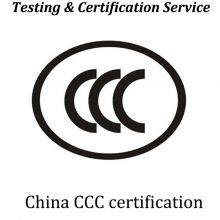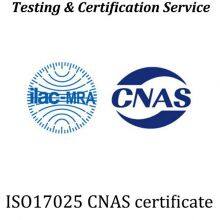CCC Certification Process, Cycle, and Standards Introduction
CCC Certification Process, Cycle, and Standards Introduction
What is CCC Certification? CCC certification, or China Compulsory Certification, is a mandatory product certification system in China. As an authoritative certification that combines national safety certification (CCEE), import safety and quality licensing system (CCIB), and China Electromagnetic Compatibility Certification (EMC), CCC is an advanced symbol of China's State Administration for Quality Supervision, Inspection and Quarantine and the Certification and Accreditation Administration of the People's Republic of China aligning with international standards, and it holds irreplaceable importance.
The Necessity of CCC Certification
1. 3C certification is a mandatory certification in China, a passport to the domestic market. For domestic sales, the primary factor is whether the product is listed in the 3C mandatory catalog. If so, 3C certification is mandatory. Having 3C certification enhances the recognition of a company's products. For exported products, the 3C certification mark can also reduce certain export inspection items.
2. Products and companies with 3C certification are more easily recognized, enhancing customer confidence, building a positive corporate image, and increasing brand awareness. Selling products without 3C certification in China will result in fines if investigated by the market supervision bureau.
3. CCC certification is an impartial and scientific quality system issued by an independent third-party testing organization, separate from the first party (supplier) and the second party (purchaser), through rigorous inspection and testing. It conforms to the principles of a market economy and brings direct economic benefits to both trading parties.
4. Obtaining CCC certification and the CCC mark is an important manifestation of a company's corporate culture and quality culture. Striving for CCC certification and producing high-quality, qualified products rather than inferior ones better helps the company's production and technological capabilities improve.
Basic CCC Certification Process
I. Contact us to confirm whether the product falls within the scope of 3C and determine if CCC certification is required.
II. Provide a list of product model differences to confirm the differences (including power supply schemes, LED differences), and determine the required random and difference tests.
III. Product testing fees are determined based on product category and the amount of random difference testing (determined according to CQC's fee standards; there is no overcharging or undercharging).
IV. Select the primary and secondary test models, determine the sample quantity, fill out the application form, and provide necessary information.
V. Submit samples and provide information.
VI. Laboratory testing.
VII. Draft report issued upon successful testing (if unsuccessful, rectification is required, followed by retesting).
VIII. Client confirms the draft report.
IX. Report submitted to CQC for review.
X. CQC approves the report and notifies the factory auditor.
XI. Factory auditor conducts the factory audit; if successful, CQC issues the certificate (if unsuccessful, rectification and re-audit are required).
CCC Certification Fee Composition
The cost of CCC certification mainly consists of: testing fees + registration fees + factory audit fees + auditor travel expenses.
CCC fees are relatively fixed. For CCC-accredited testing laboratories, there are no service fees; therefore, the fees of these laboratories are the same, and there is no need for clients to compare prices. The only requirement is to confirm whether the laboratory has CCC-accredited testing laboratory qualifications to avoid service fees or intermediary fees.
Required documents for CCC certification:
1. Application registration documents, 2. CDF form, 3. Instruction manual, 4. Circuit schematic diagram, 5. PCB wiring diagram, 6. Power supply certificate, 7. Trademark registration certificate (for first-time applications)
Frequently Asked Questions and Answers about 3C Certification:
I. How do I determine if my product is within the 3C certification catalog?
A: You can directly search for the 3C certification catalog on Baidu. There are many results; just compare them to see if it's included. Alternatively, you can check the CQC official website, which publishes the 3C certification catalog. You can also consult Xinyuhuan Laboratory for more information.
If you don't want to go through all that trouble and just want a preliminary understanding, just remember that most indoor high-voltage lighting fixtures are within the 3C certification catalog, while low-voltage lighting fixtures and outdoor lighting fixtures are not. These can apply for CQC certification.
II. What if the driver is manufactured in my own factory and doesn't have 3C certification? Can I still apply for 3C certification for the lighting fixtures?
A: For outsourced drivers, 3C certification is mandatory for 3C certification of lighting fixtures. Drivers manufactured in-house do not require 3C certification; random testing is sufficient, but an additional random testing fee will apply.
III. How are lighting fixture 3C certification series categorized? Which models can be grouped together?
A: The principles for series categorization are the same as other certifications: 1. IP rating must be consistent; 2. Installation method must be consistent; 3. Protection against electric shock must be consistent; 4. Power supply principle must be consistent; 5. Structure must be similar.
IV. I heard that 3C certification can be issued first, followed by factory inspection. Is this possible for all products? How long can the factory inspection be postponed?
A: Some products can have certification issued first, followed by factory inspection, mainly multimedia products. The latest factory inspection can be postponed is six months, and an extension can be applied for before the expiration date.
V. How long does the 3C certification cycle take?
A: Normally, it takes one month. Problems with product testing or documentation during the process can extend the cycle.

Send Inquiry to This Supplier
You May Also Like
-
Singapore PSB Certification for Rice CookersNegotiableMOQ: 1 Piece
-
CB Certification for Hair Dryers: IEC60335 Testing and CertificationNegotiableMOQ: 1 Piece
-
By 2025, Mice and Keyboards Listed on E-commerce Platforms Will be Required to Provide Full GB/T 14081-2010 and GB/T 26245-2010 Test Reports.NegotiableMOQ: 1 Piece
-
Remote Control Switch IEC 60669-2-2 Standard Test ReportNegotiableMOQ: 1 Piece
-
Safety Standard EN 50604 for Secondary Lithium Batteries in Light Electric Vehicles (EN 50604-1) - Enforcement DateNegotiableMOQ: 1 Piece
-
Brazil ANATEL Certification Process and Testing CycleUS$ 100MOQ: 1 Piece
-
Introduction to FCC Certification Process, Cycle, and StandardsUS$ 100MOQ: 1 Piece
-
Analysis of Key Points of Battery Testing When Smart Watches Apply for CE and RoHS CertificationNegotiableMOQ: 1 Piece
-
How Electronic and Home Appliances Get High-efficiency and Environmentally Friendly LabelsNegotiableMOQ: 1 Piece
-
Argentina IRAM Certification Safety and Performance Testing of Solar ProductsNegotiableMOQ: 1 Piece








